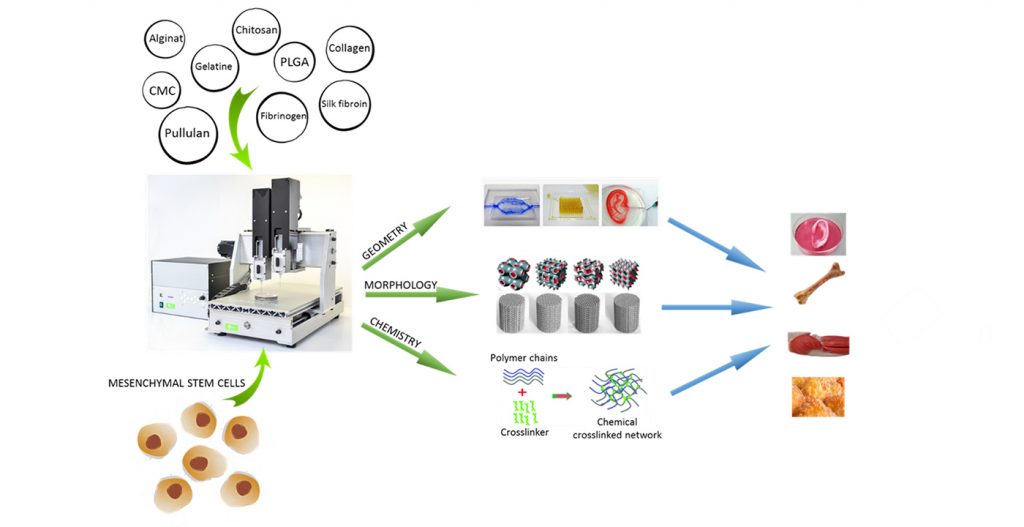The influence of geometry, morphology in chemistry of biomaterials on stem cell differentiation
Reference number
MIZŠ: 5442-1/2018/59
Financing, programme, call
The operation is cofunded by the Republic of Slovenia (MIZŠ) and the European Union European regional development fund. Operational Programme for Cohesion Policy Funding 2014 – 2020. Public call »Javni razpis za spodbujanje raziskovalcev na začetku kariere 2.1«.

Partnering organisations
IRNAS d.o.o.

Coordination
Jan Rožanc (project manager), Tatjana Golob (coordinator at MFUM), Uroš Maver (head of research group)
Duration
1.4.2019 – 31.3.2022
Back to the list
Short description
The aim of the project is to develop a platform of several different printable bioinks for 3D printing of materials and stem cells simultaneously. We are additionally working on protocols for the analysis of the prepared materials in terms of determining changes in phenotype before and after embedding and during cell growth itself at different time points after 3D printing.
The purpose of the above is twofold, on the one hand to understand how the phenotype of stem cells can be influenced by altering the chemistry, morphology and structure of 3D printed materials, which could lead to a number of new therapeutic options in the field of regenerative medicine, and on the other hand to understand the orchestration of stem cell function through their paracrine and autocrine communication and on a population of cells within a certain environment (e.g. scaffold), based on the optimisation of protocols for monitoring phenotype changes. Such findings will contribute significantly to the development of the field of regenerative medicine and possibly increase the potential of future products for faster implementation in clinical practice.

Objectives
- Preparation of stable cell cultures of stem cells
- Preparation of advanced cell formulations and synthetic ECM (“bioink”) for 3D bioprinting
- Optimisation of 3D bioprinting processes
- Fabrication of tissue scaffolds that geometrically mimic native tissues (e.g. bone, cartilage)
- Cultivation and analytics of in-vitro tissue supports